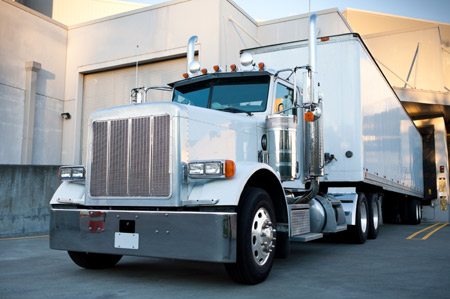Trucker Shortage Means Late Deliveries and Higher Costs for Food Companies
Category: Miscellaneous
 (Food Dive) – The American trucking industry is struggling with a growing driver shortage as demand for shipped goods increases, leading to price hikes and delays across the food industry, according to Supermarket News.
(Food Dive) – The American trucking industry is struggling with a growing driver shortage as demand for shipped goods increases, leading to price hikes and delays across the food industry, according to Supermarket News.
Currently, trucks carry more than 70% of the goods consumed in this country. The American Trucking Associations (ATA) estimate that 2017 saw its greatest driver shortfall to date, and could reach 174,000 unfilled driver positions by 2026.
An aging driver population and lack of interest in the industry among younger workers is a leading contributing factor to the shortage. A lack of qualified applicants is another problem for transportation companies.
For the past 15 years, the American Trucking Associations (ATA) has struggled with a driver shortage and the problem has only gotten worse since the recession ended. According to an industry analysis by DAT Solutions, just one truck was available for every 12 loads needing to be shipped at the start of 2018, which is the lowest ratio since 2005.
There are a number of factors contributing to this shortage. First, the average age of a truck driver is 49 years old. As these older workers retire, younger truckers aren’t picking up their workloads. The industry also has very high turnover — around 90% annually, according to the ATA.
The demands of the job are steep, even with recent regulations limiting time on the road, and keep many otherwise qualified drivers from applying. The hours are long and don’t allow for much of a home life. In addition, it’s a largely male field, with only 6% women in its workforce.
Add expensive licensing fees and unrest over new safety regulations that require commercial truck drivers to use electronic logging devices, and it all adds up to a multitude of factors working against the trucking industry.
Retailers and manufacturers are feeling the pinch as a result. Problems like product shortages, delivery delays and higher prices are just some of the impacts.
Some fleets are offering to pay the licensing fee for new drivers, and offering higher wages as a way to attract new recruits. However, pressure to keep shipping costs down has kept them from increasing compensation.
Some retailers, like Walmart and Kroger, have begun fining suppliers for late deliveries and those fines could start to pile up as workforce shortages strain delivery fleets. Kroger charges suppliers $500 per day for deliveries made past a two-day window, while Walmart levels monthly fines against companies that are worth 3% of the value of each late or incomplete shipment. Walmart also charges for deliveries received too early.
The trucker shortage has fleets caught in something of a catch 22. They’re more likely to make a late delivery if they’re short on drivers, and the fines they incur chip away at the extra money they need to offer to incentivize workers to sign up.
Median driver pay is just over $41,000. In addition to bonuses, fleets can offer more desirable routes and less time on the road as selling points to become a driver. Many companies are already putting these perks on the table, and still coming up short for hires. In order to keep up with increased shipping demands, roughly 90,000 new drivers would need to be hired every year.
According to the Food Marketing Institute, grocers lose $75 billion a year in sales — 10% of the industry total — due to out-of-stocks and unsaleable goods, often the result of late deliveries. If fleets can’t find new drivers, expect those numbers to increase. If the problem isn’t solved, it wouldn’t be surprising to see retailers and manufacturers pass the cost of those loses on to consumers.




